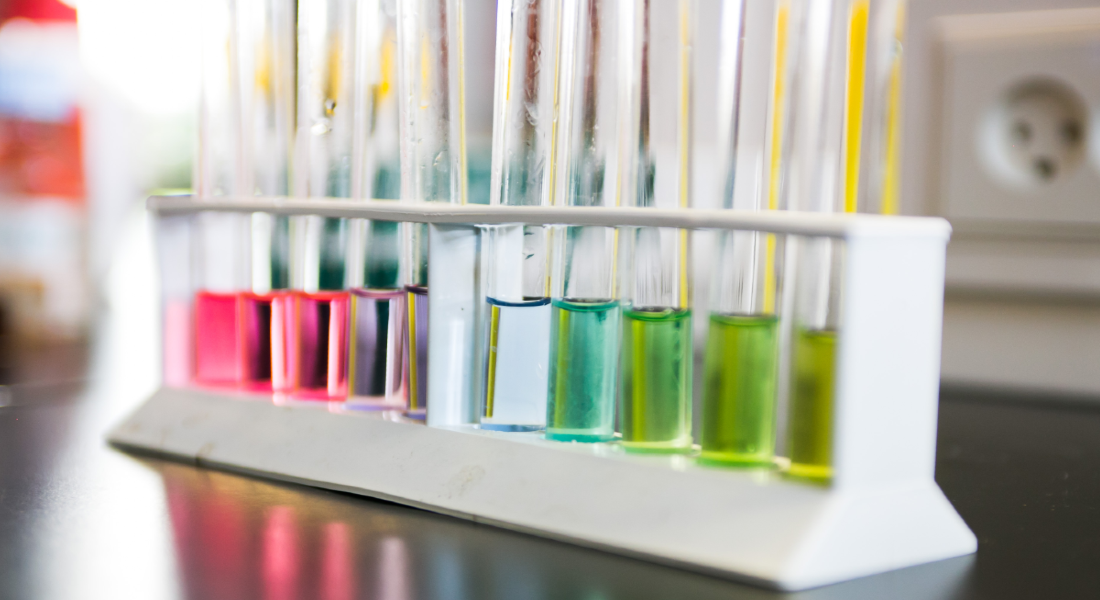Department of Chemistry Unit of the Center for Colloid and Interface Science
In general, The Department of Chemistry covers chemistry as an independent discipline and provides basic research as well as teaching of different disciplines in Chemistry. This unit covers department´s activities in relation to Surface and Colloid Chemistry.
In relation to Surface and Colloid Chemistry there are research activities in the Chemical Biology, Nanochemistry and Organic Chemistry groups that are dealing with different aspects of surface and colloid chemistry, fundamental studies of biological membranes, design, synthesis and characterization of self-assembling peptides, synthesis, characterization and biological properties of dendrimers, and synthesis and characterization of inorganic nanoparticles.
However, there is also a focus on the potential applications of the research, so the research in Surface and Colloid Chemistry at the Department of Chemistry can best be described as using a bottom-up approach, where potential applications arise from fundamental discoveries.
Nanochemistry
Our lab is developing disruptive technologies to study the biophysical properties of membranes and membrane proteins on the nanoscale using fluorescence microscopy. Membrane proteins are one of the most important classes of proteins in biology comprising more than 60% of existing pharmaceutical targets. Biological membranes enable the function of membrane proteins and therefore play a key role themselves in governing a plethora of biological processes. Our work uncovers hitherto unknown nanoscale properties of membrane and membrane proteins that ultimately dictate cell behavior, and consequently provides a path towards new generations of therapeutic agents based on entirely new biological principles.
In a breakthrough paper in Science we developed a method that using single unilamellar vesicles resolved ionic currents with a million-fold higher sensitivity than the Nobel prize awarded method of patch clamp (atto-amperes).
This allowed us to observe for the first time the function of single transporters, revealing the existence of functional heterogeneity based on hitherto unknown off-cycle states (i.e. ultra-stable inactive and leaky states with lifetimes 10^5-fold longer than those of states in the classical transport cycle). The dramatic consequence of this unforeseen complexity is that many fundamental mechanistic tenets that were based on macroscopic experiments of transport will have to be revised. This truly transformative innovation is the crowning achievement of a decade of research in our lab and we believe is likely to spark off a technological and conceptual paradigm shift in the transport field.
Eukaryotic life is defined by the existence of intracellular membrane-bound organelles. Endomembranes are overall more curved than the plasma membrane their heterogeneous geometrical shapes however are not arbitrary, on the contrary they are so characteristic that they have become a hallmark of the different eukaryotic organelles. To elucidate why this phenotype is so remarkably conserved we have pioneered several high-throughput nanoscopic methods to study how membrane curvature is affecting the function(s) of membranes and membrane proteins, with an emphasis on Ras and G protein coupled receptors. Our contributions have overall helped establish the notion that the properties of biological membranes are defined equally by their lipid composition and their geometrical shape.4
Spatiotemporal compositional and functional heterogeneities are a hallmark of biological membranes. We are investigating the implications of these heterogeneities for biological function and also exploit them for technological applications. For example, with high-throughput single proteoliposome measurements we quantified the composition of single proteoliposomes revealing dramatic heterogeneities. As we showed, compositional heterogeneities can severely skew ensemble-average proteoliposome measurements however, if averaging is avoided such heterogeneities can be exploited to enable high-content screens that enable a dramatic reduction in protein consumption (~billion-fold) as compared to conventional assays. We are currently extending this project to investigate nanoscopic compositional and functional heterogeneities of G protein coupled receptors in live cells.
Jørn Bolstad Christensen Group
The activities in the Christensen-group are focused on design, synthesis and applications of biologically active molecules ranging from small and macromolecules to self-assembling structures (dendrimers, dendrimerisomes). We are currently working on strategies for killing multi-resistant bacteria including inhibitors of bacterial efflux-pumps; new anti-microbial compounds with new modes of action; dendrimers for diagnostics and treatment of cardiovascular disease and dendrimers as carriers or drugs for the treatment of cancer.
These activities cover a spectrum from designing a new molecule to synthesis & characterization and subsequent testing biological testing (in vitro & if meaningful in vivo). Our in-house expertise is molecular design, synthesis (as well as upscaling) & characterization (NMR, MS, SEC-MALS).
-
Single Transporter Activity Recordings (STARs) (PI: Dimitrious Stamou)
-
Membrane curvature (PI: Dimitrious Stamou)
-
Nanoscopic heterogeneity of biological membranes (PI: Dimitrious Stamou)
-
Photodynamic therapy using dendrimers and dendrons for targeting and delivery. (PI: Jørn Bolstad Christensen; JBC)
-
Self-assembling dendrimer guest-host complexes (PI: JBC)
-
New antimicrobial agents (PI’s: JBC & Rikke Heidemann Olsen (Veterinary Clinical Microbiology, KU)
-
Membrane curvature regulates sorting of GPCRs within the plasma membrane of living cells in a ligand-specific manner.
-
Direct observation of proton pumping by a eukaryotic P-type ATPase.
-
Two for the Price of One: PAMAM-Dendrimers with Mixed Phosphoryl Choline and Oligomeric Poly(Caprolactone) Surfaces.
-
Complexes of Indomethacin with 4-Carbomethoxy-pyrrolidone PAMAM Dendrimers Show Improved Anti-inflammatory Properties and Temperature-Dependent Binding and Release Profile.
-
Makromolekyler, cofaktorer og metalioner og deres kemi i biologiske systemer (Macromolecules, cofactors and metalions and their chemistry in biological systems, only in Danish):
-
Nanoscale Properties of Biological Membranes (MembranN) (course code NKEB12008):
-
Structural Tools in Nanoscience (NKEK12008U):
Team
| Name | Unit | |
|---|---|---|
| Jørn Bolstad Christensen | JBC-group | jbc@chem.ku.dk |
| Dimitrios Stamou |
Bio-nanotechnology and Nanomedicine Group
Center for Synthetic Biology
|
stamou@nano.ku.dk |

